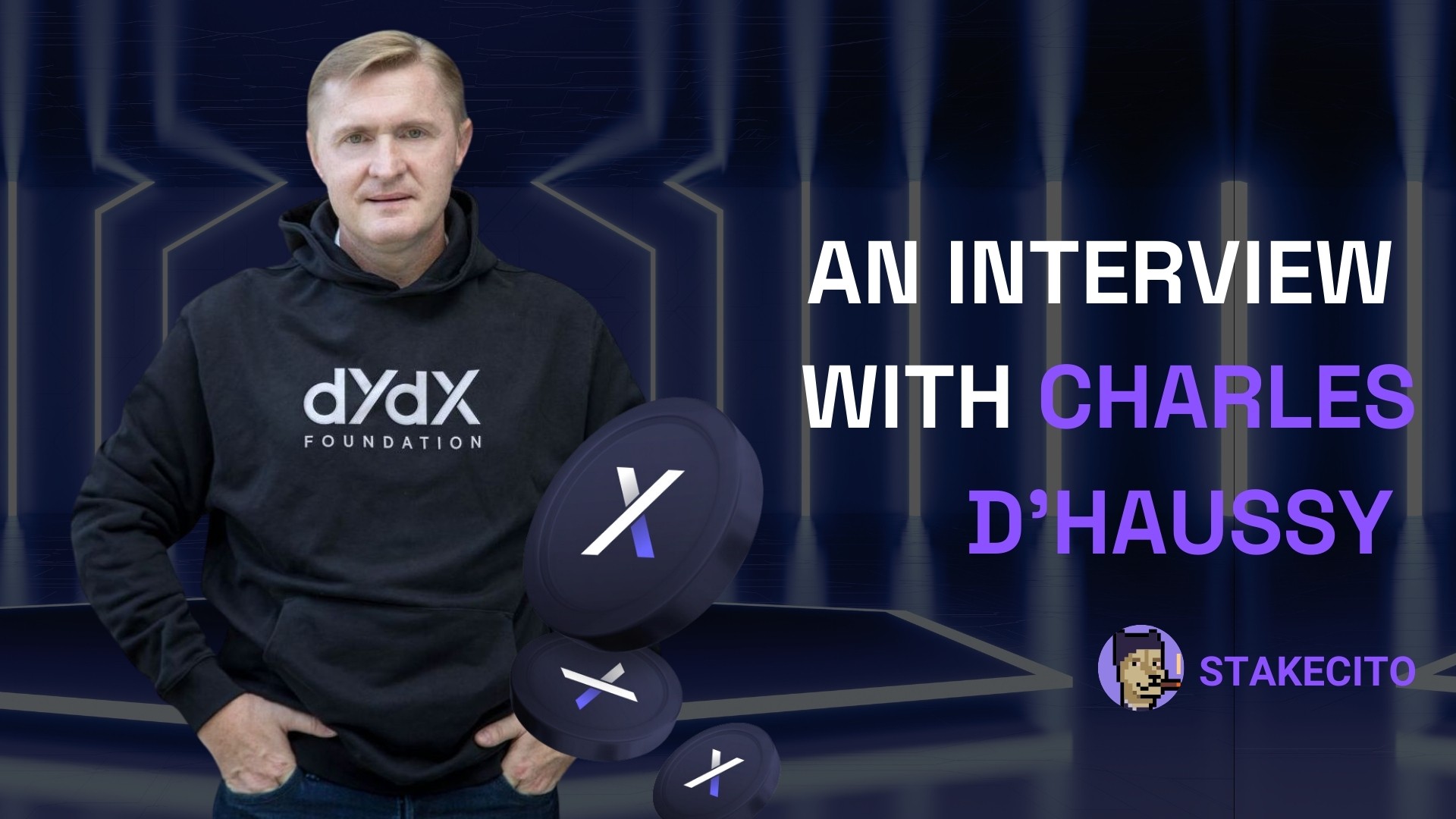In a recent interview on the Stakecito Podcast, Eric Chen, Co-Founder of Injective, shared a deep dive into the platform’s evolution, major upgrades, and its vision for the future. The conversation, hosted by Stakecito's Nemus, explored Injective's journey from a decentralized exchange (DEX) infrastructure to a more generalized Layer 1 solution, making significant strides in decentralized finance (DeFi) and real-world asset (RWA) tokenization. Below are some of the key highlights from the interview.
The Evolution of Injective From DEX to Generalized Layer 1
Eric Chen began by explaining how Injective initially focused on building a decentralized exchange (DEX) infrastructure. However, the platform’s ambition quickly expanded, evolving into a general-purpose Layer 1 blockchain tailored for financial applications. Injective started by focusing on user-centric applications but soon realized the infrastructure they built could serve a much broader range of decentralized applications (dApps).
The core of this transformation was Injective’s flexible infrastructure, allowing developers to create sophisticated financial products like perpetual futures and prediction markets within minutes. This flexibility was critical in positioning Injective as a solid platform for financial applications in the decentralized space.
Key Features of Injective Compared to Ethereum and Other Layer 1 Blockchains
During the interview, Chen highlighted what sets Injective apart from other Layer 1 blockchains, particularly Ethereum. Injective offers an open, interoperable Layer 1 blockchain with advanced functionalities designed for compute-intensive and communication-heavy applications. Its native modules, such as the fully decentralized and time-agnostic exchange module, differentiate it by enabling cost-efficient, high-performance financial applications.
A key feature mentioned was Injective’s resistance to MEV (Maximal Extractable Value) issues, a common challenge in Ethereum-based systems. Injective’s built-in modules for exchange, Oracle, and Bridge functionalities further enhance its usability for developers, providing plug-and-play solutions for building sophisticated DeFi applications.
2024 Upgrades: Volan and Altaris
In 2024, Injective rolled out two major upgrades: the Volan Upgrade in January and the Altaris Upgrade in August.
The Volan Upgrade focused on the integration of real-world assets (RWAs), enabling tokenized assets like U.S. Treasuries to be issued and traded on-chain. This opened the door for institutional liquidity and allowed for the growth of permissioned assets within the Injective ecosystem.

The Altaris Upgrade brought several critical improvements, notably a reduction in block time and increased TPS (transactions per second). This compression of block time results in faster transaction speeds, positioning Injective for even more ambitious future upgrades. Another feature from the Altaris Upgrade was a significant reduction in transaction fees, down to sub-0.00003 cents, thanks to Injective's gas compression techniques.

Tokenomics Upgrade: INJ 3.0
One of the most talked-about features of Injective’s 2024 advancements is the INJ 3.0 Tokenomics Upgrade. Chen explained how this upgrade makes the native $INJ token deflationary by introducing mechanisms like burn auctions. The upgrade not only sets a gradual reduction in the inflation schedule over the years but also ensures that a substantial portion of $INJ tokens are burned, further reducing supply and enhancing the deflationary nature of the token.

In recent months, the burn auction module has seen $50,000 worth of $INJ tokens burned, illustrating the platform’s commitment to maintaining a deflationary supply.
CW-404 Standard and the Rise of Real-World Assets
Injective continues to push the boundaries of decentralized finance by introducing the world’s first CW-404 Standard. This standard allows for a hybrid between fungible and non-fungible tokens (NFTs), enabling more flexibility in how tokens are used and traded within the Injective ecosystem. Projects like DojoSwap have already begun adopting the CW-404 standard, further advancing Injective’s utility in DeFi.
Real-world assets (RWAs) are another major focus for Injective. The Volan Upgrade enabled the launch of USDT-backed stablecoins like USDY and USDM, paving the way for institutional adoption. Chen emphasized that while RWAs have a slow adoption curve, they will provide long-term value as institutional liquidity increasingly enters the blockchain space.
Institutional Adoption - 21Shares and ETP Launch
Injective’s focus on institutional adoption is evident through its collaboration with 21Shares, a prominent player in Europe’s financial markets. The launch of the INJ Exchange Traded Product (ETP), a European equivalent of an ETF, marks a pivotal moment for Injective’s institutional strategy. This ETP provides institutions with a gateway to $INJ, further solidifying Injective’s position in the traditional financial markets.

Integration with the TON Network
A notable integration discussed was the connection between Injective and Telegram’s TON blockchain. This integration allows for seamless transfer of assets and data between the two ecosystems. As Chen pointed out, this partnership opens up new possibilities for interoperability between Injective and TON, with further collaborations expected to enhance both ecosystems.
Binance Pay and Injective's EVM Environment
Chen also touched upon the integration of Injective with Binance Pay, allowing users to pay for goods and services using $INJ in applicable jurisdictions. Additionally, Injective’s inEVM environment, developed in collaboration with Caldera and Arbitrum, allows developers to build and deploy Ethereum-based dApps within the Injective ecosystem, further enhancing its multi-VM capabilities.

Injective continues to break new ground in decentralized finance, positioning itself as a leading Layer 1 blockchain for financial applications. With its recent upgrades, focus on real-world asset tokenization, and growing institutional adoption, Injective is paving the way for a more inclusive, efficient, and decentralized financial future.
——————————————————
About Stakecito Labs
At Stakecito Labs, we've honed our craft as validators. Our reputation as the third-largest validator by delegation count within the Cosmos ecosystem speaks to our unwavering dedication and the trust placed in us by over 270,000 delegators worldwide.
Our validation services are not just about maintaining Cosmos blockchain networks though; we validate networks outside of Cosmos as well (NEAR, Aleph Zero, etc.).
Our core mission is centered on demystifying blockchain technology to ensure it's accessible for everyone, from newcomers to seasoned investors. To begin staking, visit our homepage.
Stake with Stakecito | Follow us on Twitter | Subscribe to Our YouTube | Governance
——————————————————






